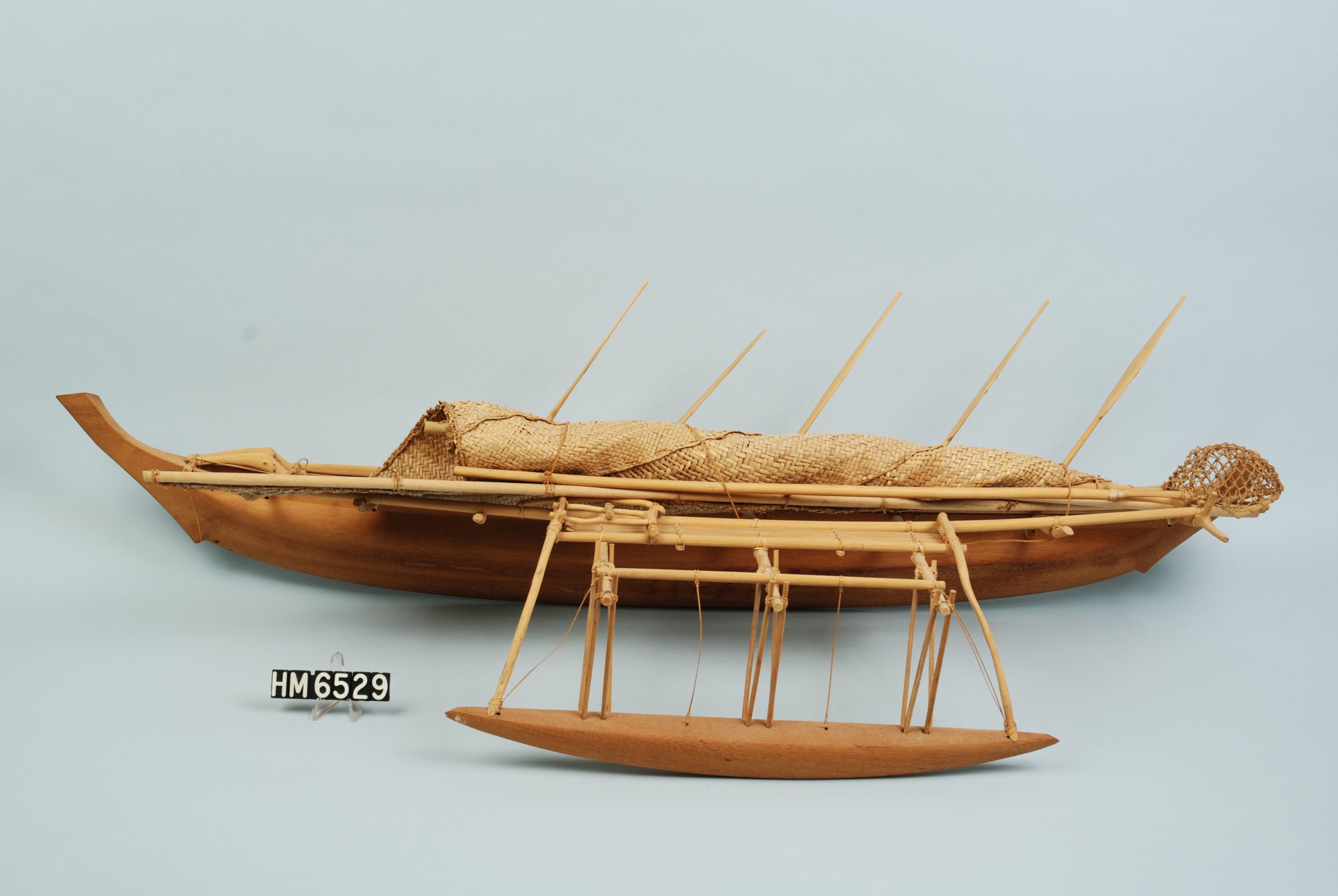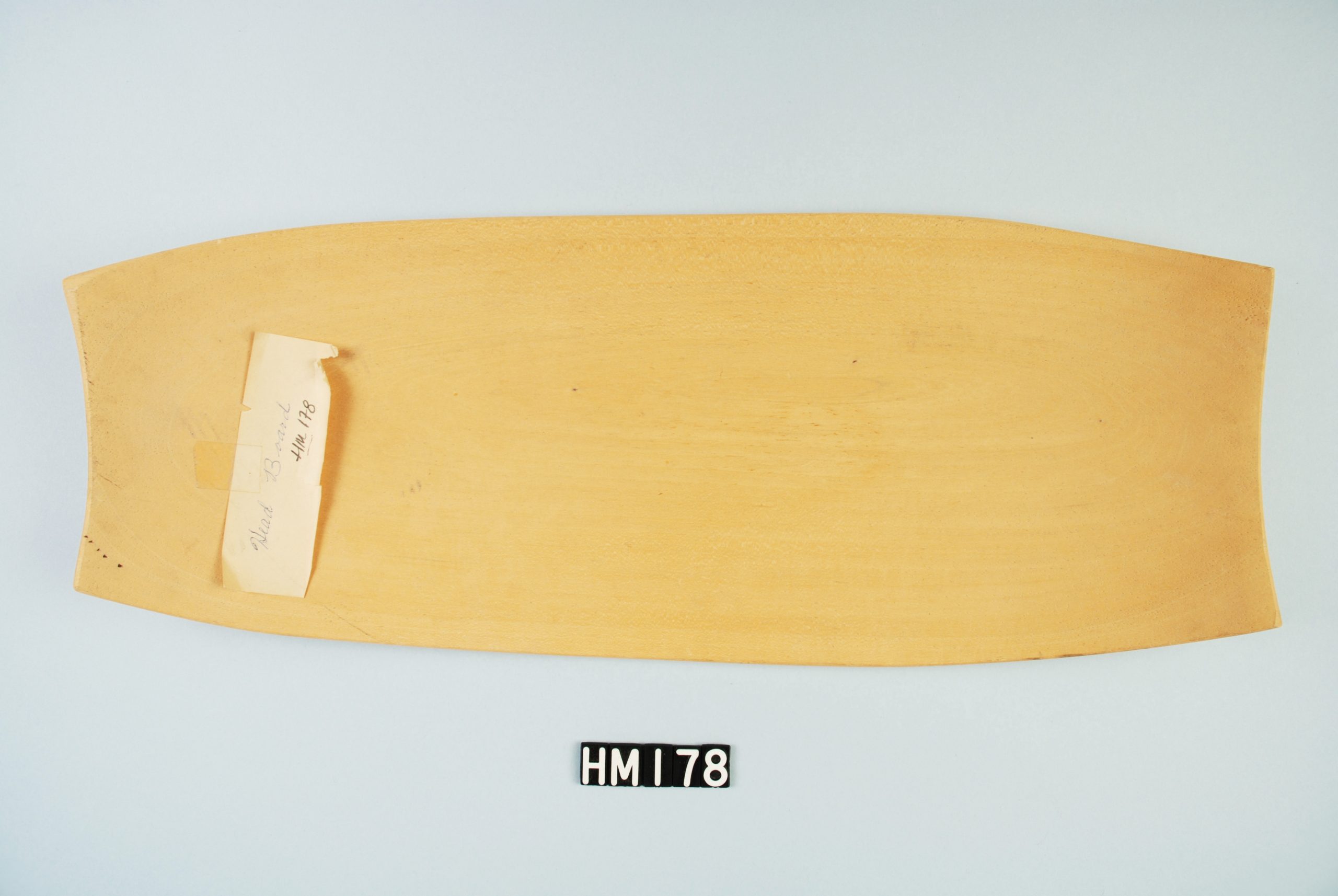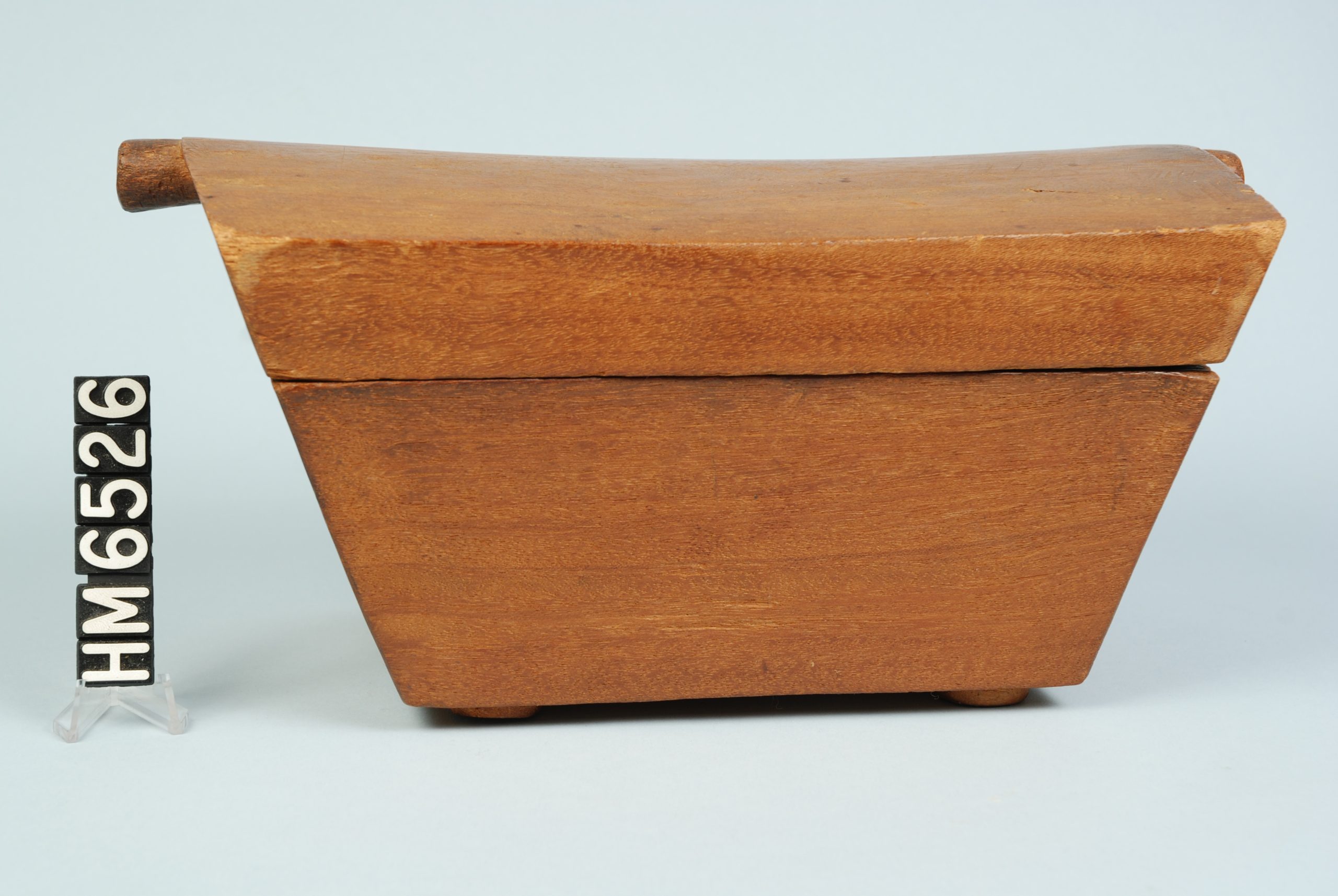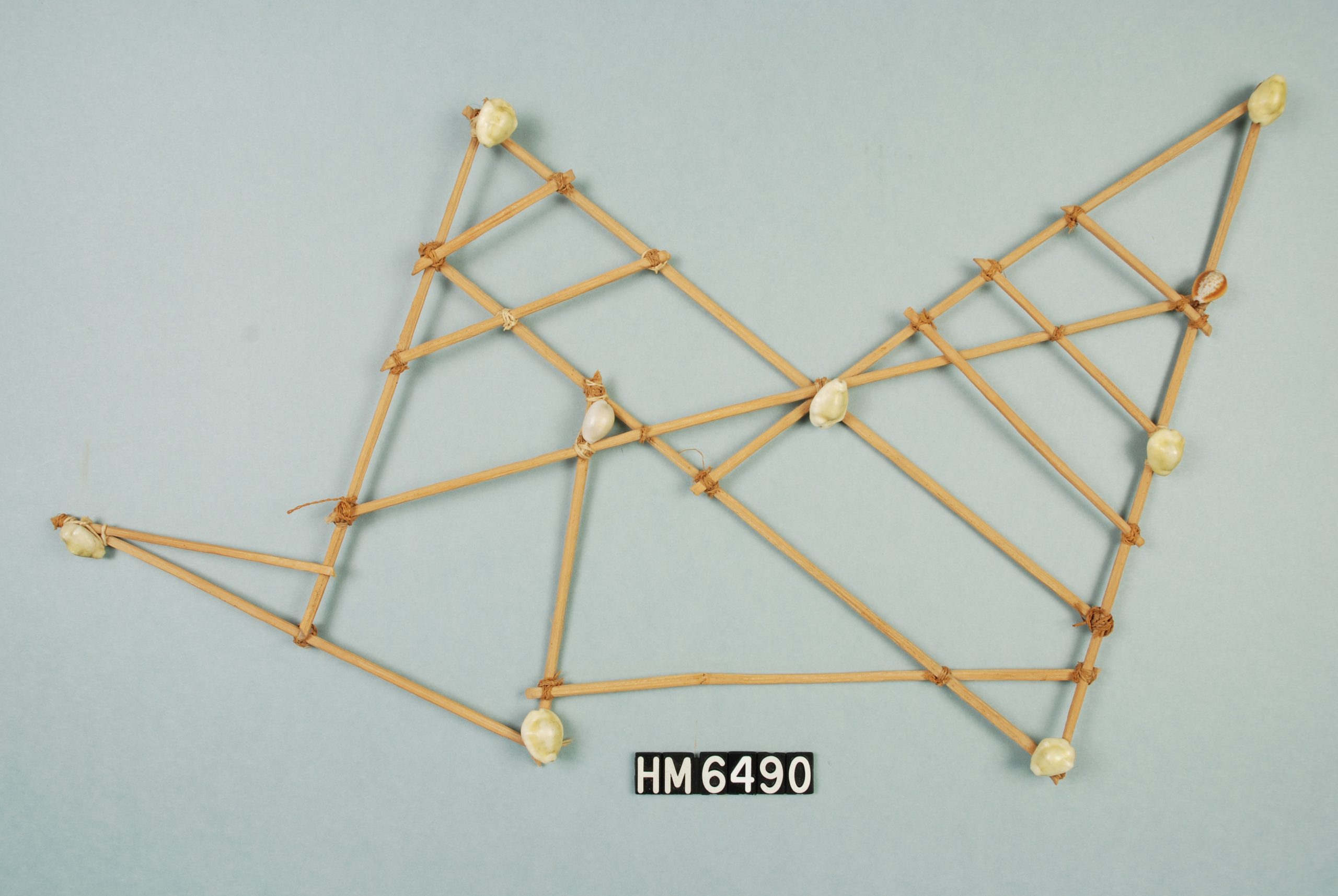Outrigger Canoe Models
Richard Emerick commissioned traditional sailing outrigger canoe models for the islands in the Pohnpei District: Kapingamarangi, Nukuoro, Majuro, Kosrae, and Chuuk. All are designed with a single outrigger and are called wa. Their hulls are generally made from hollowed out bread fruit tree trunks and sails were made from woven pandanus leaves. Propelled by both paddles and sails, these vessels traveled hundreds and even thousands of miles on trading voyages, drawing on navigation charts made from sticks and shells. These charts mark ocean swell patterns and the ways that these patterns were disrupted by islands.
Outrigger Canoe Model
c. 1950
Truk (Chuuk) Caroline Islands
Emerick collected canoe models from a variety of islands in the Pohnpei District.
Emerick Collection
HM6582
Outrigger Canoe Model
c. 1950
Kapingamarangi, Caroline Islands
Among Emerick’s collection of canoe models, there are subtle differences in hull styles, especially in the design of the prows.
Emerick Collection
HM6529
Outrigger Canoe Model
c. 1940
Eastern Papua New Guinea
While serving in New Guinea during World War II, Ralph White had an opportunity to acquire this item – a common trade item for service men to collect and bring home with them at the end of the war.
White Collection
HM5471
Canoe Box
c. 1950
Kapingamarangi, Caroline Islands
This box with a tight-fitting lid was designed to store important items in the outrigger canoe’s hull.
Emerick Collection
HM6526
Navigation Chart
c. 1950
Majuro, Marshall Islands
Stick charts served as instructional aids for preserving navigational knowledge. They were not taken on voyages, but memorized. The charts’ sticks and shells depict wave and current patterns and how islands interrupted this patterns, allowing sailors to determine the position of islands.
Emerick Collection
HM6490






